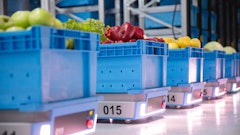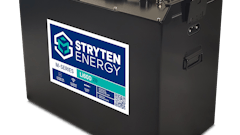With 230 forklifts and 1,080 operators spread out over three locations across the state Pennsylvania, when the Clemens Food Group identified the priority of improving operator and forklift productivity as a way of reigning in costs, it became a very large and complex task.
Clemens Food Group, a pork processor with over 118 years of history based in Hatfield, Pa., had its main 1.3 million square foot facility covered with 120 forklifts, as well as a third-party logistics warehouse and second smaller processing plant all covered with various lift trucks of different sizes, makes and models. The task of trying to identify where to focus their attention in achieving efficiency and operator safety started with a clear understanding of how and when the forklifts where being operated.
“We quickly realized we needed some sort of operator and fleet management system that would help us collect and analyze relevant fleet information that we could then use to identify opportunities to reduce costs and improve productivity,” said Kevin Shayer, general manager of distribution and warehousing at Clemens.
After considering the alternatives, Clemens Food Group picked the InfoLink System from Crown because as Clemens director of maintenance Mike Bracrella stated, “we liked that the systems was developed by an actual forklift provider, and while Crown forklifts make up the majority of our fleet, we do have other brands. It was critical that we could deploy a system that could work with a mixed fleet without any drastic changes on our end.”
There were three specific areas of focus the Clemens team decided beforehand that they wanted the InfoLink system to try and address: improving OSHA compliance, operator certification and impact detection. Within months the team at Clemens was seeing significant improvement in all three areas.
“InfoLink brought a new level of efficiency to our OSHA compliance efforts,” said Jeff Barnes, maintenance engineer at Clemens Food Group. “Because the system allows us to assign a PIN number to each operator, we are able to limit access to the vehicle to only those operators with the required certification. By integrating the inspection checklist into the system we were able to automate the process, which ensures each operator performs the inspection process with the proper attention to detail.”
Through the use of the system’s impact monitoring and management capabilities, Clemens also was able to dramatically reduce the number of impact events, in some instances as the reduction in major impact events dropped 80 percent. InfoLink can also collect and filter the data right down to the number of impacts per shift, allowing supervisors to create benchmarks and increase their ability to evaluate the productivity and safety of each operator.
“Through the gathering of performance information and monitoring of benchmarks, we are able to identify our most productive operators, as well as identify the operators that may need additional training,” said Barnes. “We can keep track of how and when our equipment is being used and which operator is on the equipment at any given time. Sometimes it’s just a matter of getting optimal use out of the trucks we currently have.”



























